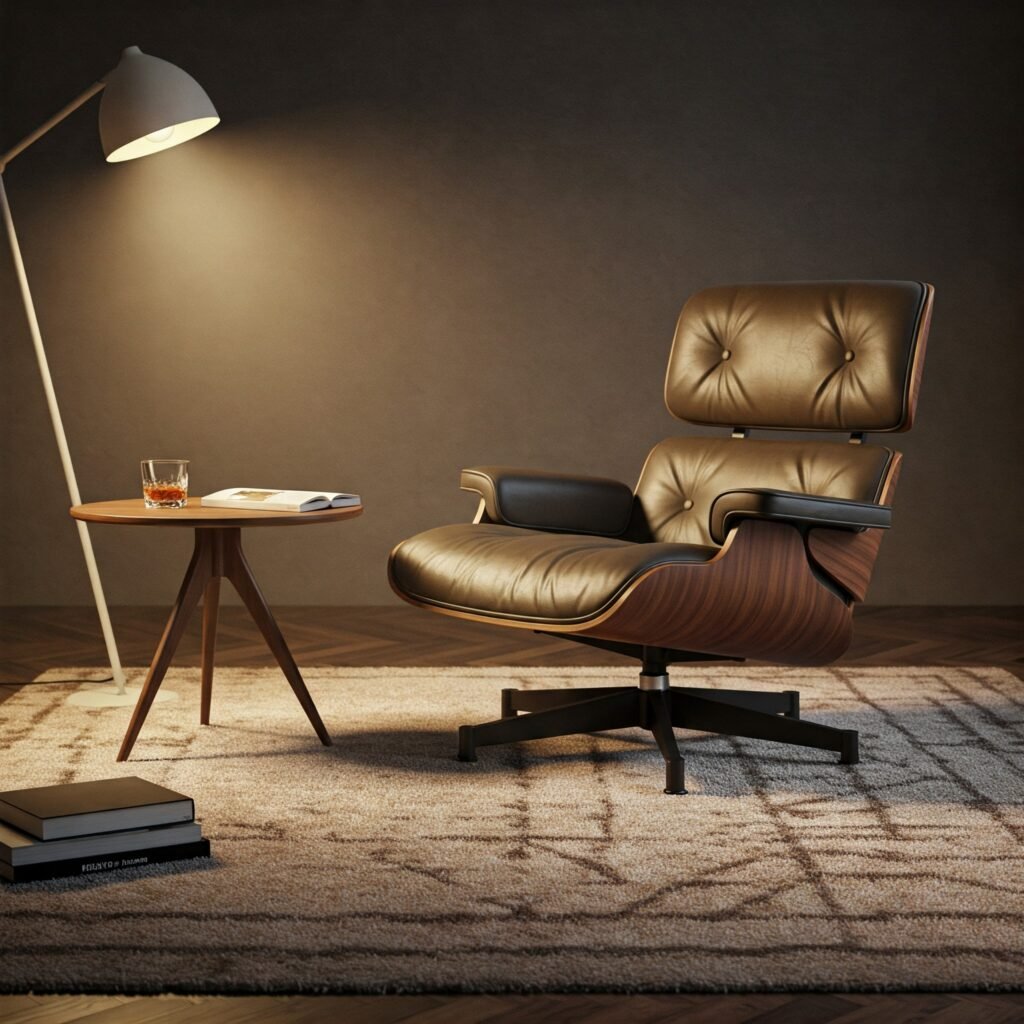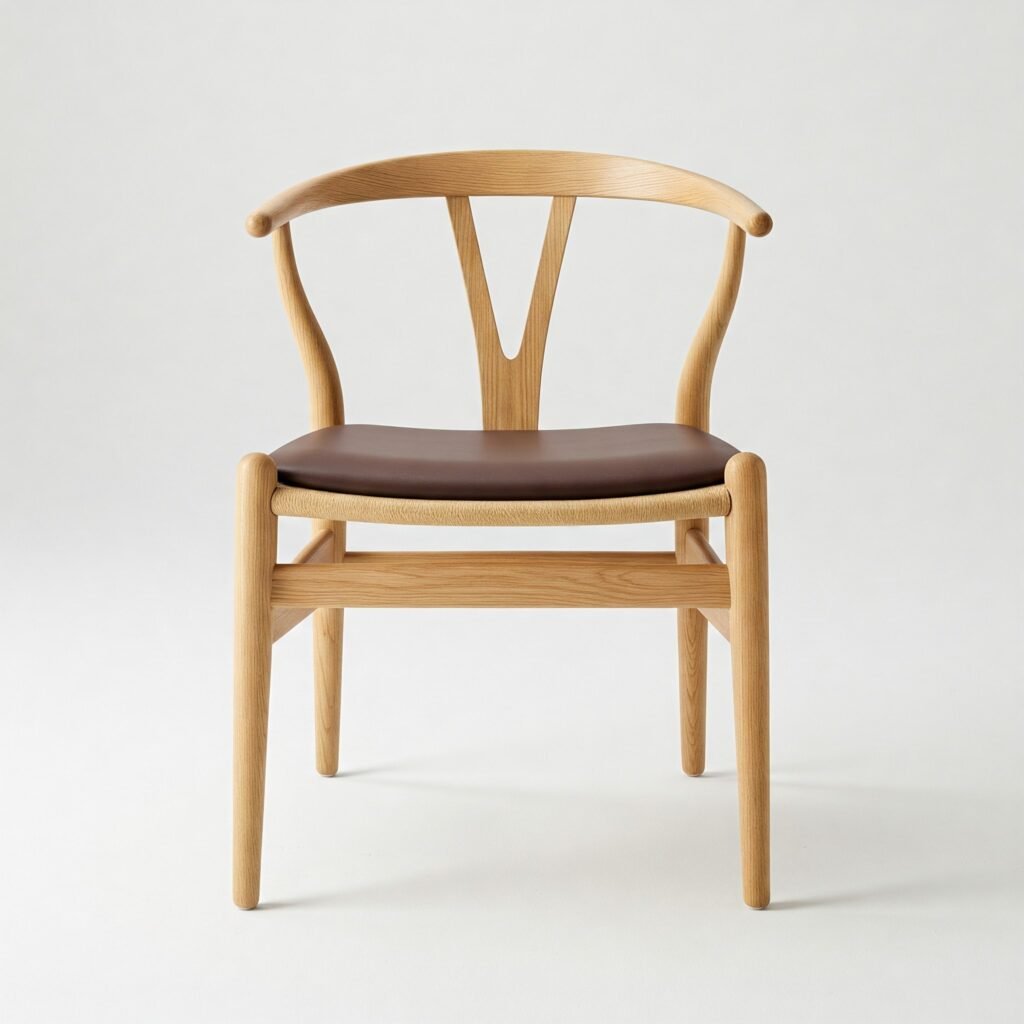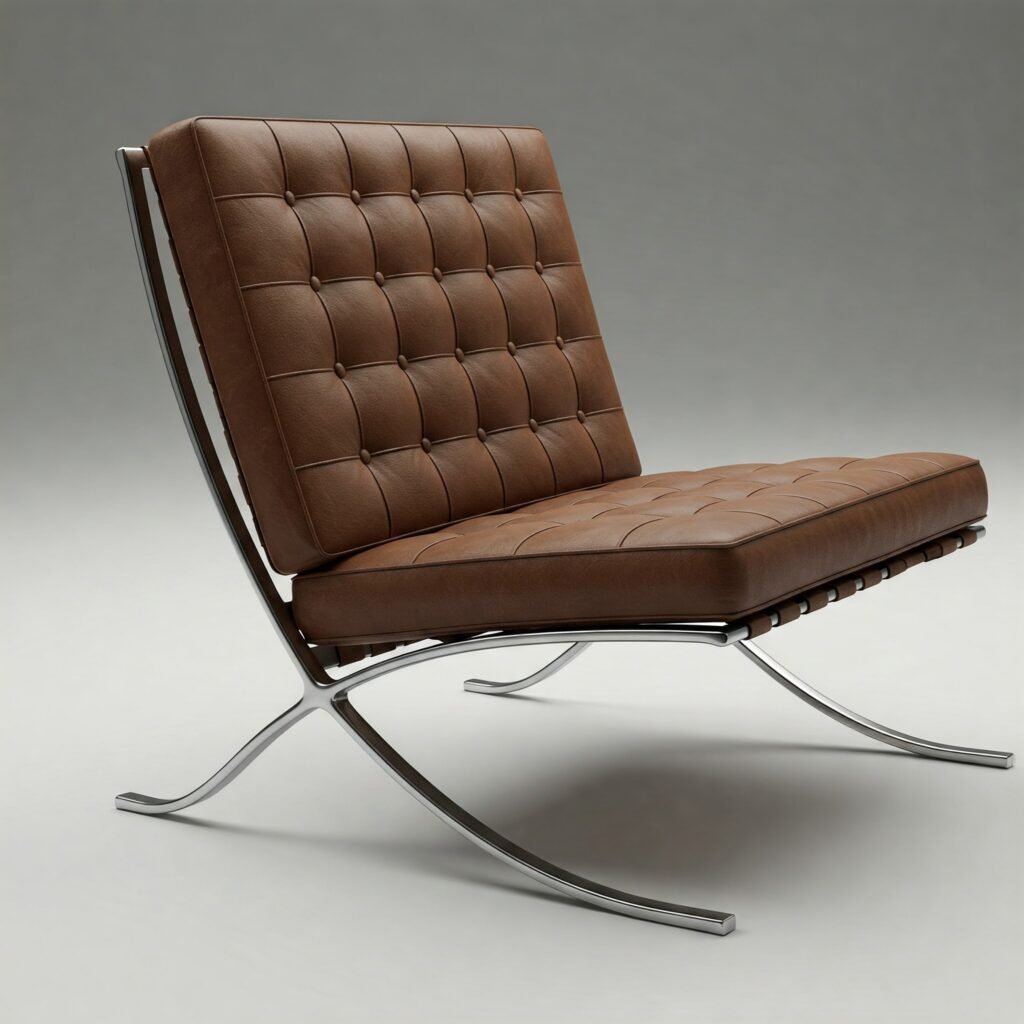Midcentury modern chairs represent a golden age of furniture design that continues to captivate homeowners, designers, and collectors. Emerging in the post-war period between the 1930s and 1960s, these iconic pieces revolutionized how we think about form, function, and comfort in seating.
What makes these designs so perpetually relevant? Three fundamental principles:
- Ergonomic Innovation – Each curve and angle was carefully considered for human comfort
- Material Experimentation – Pioneering use of molded plywood, fiberglass, and tubular steel
- Timeless Aesthetics – Clean lines and organic forms that transcend decades
This comprehensive guide explores seven definitive midcentury modern chairs that have earned their place in design history. For each masterpiece, we’ll examine:
- The designer’s original vision and creative process
- Groundbreaking technical innovations
- Ideal applications in contemporary interiors
- Care and preservation recommendations
- Styling suggestions for modern homes
1. The Eames Lounge Chair: A Revolution in Comfort

Designers: Charles and Ray Eames
Manufacturer: Herman Miller
Year Created: 1956
The Design Story
The Eames Lounge Chair emerged from the designers’ wartime experiments with molded plywood. Originally developed for military splints, this technology became the foundation for their revolutionary furniture designs.
“We wanted to make the best for the most for the least.”
— Charles Eames
Anatomy of an Icon
Frame Construction:
- Three-part molded plywood shell
- Shock-mounted for flexible movement
- 15° reclined angle for optimal relaxation
Upholstery Details:
- Top-grain leather upholstery
- Multi-layer foam cushioning system
- Hand-applied finish that develops patina
Living With an Eames Lounge
Ideal Placement:
- Reading nook with adjustable lighting
- Executive office seating
- Living room focal point
Care Recommendations:
- Regular leather conditioning
- Cushion rotation for even wear
- Protection from direct sunlight
Design Insight: “The Eames Lounge improves with age—the wear patterns become part of its story.” — Furniture Conservator
2. Wegner Wishbone Chair: Danish Craftsmanship Perfected

Designer: Hans J. Wegner
Manufacturer: Carl Hansen & Son
Year Created: 1949
Design Philosophy
Wegner believed “a chair should have no backside”—it should be beautiful from every angle. His Wishbone chair embodies this through:
- 17 precisely angled back spindles
- Continuous arm-to-back curve
- Handwoven paper cord seat
Functional Artistry
Construction Details:
- Steam-bent solid wood frame
- Traditional mortise-and-tenon joinery
- 120+ meters of paper cord per seat
Ergonomic Benefits:
- Y-shaped back supports posture
- Slight seat tilt encourages proper sitting
- Armless design allows flexible use
Modern Applications
Perfect For:
- Dining room ensembles
- Kitchen island seating
- Home office use
Maintenance Tips:
- Professional cord tightening when needed
- Felt pads on wood feet
- Gentle cleaning with damp cloth
3. Barcelona Chair: Minimalist Masterpiece

Designer: Ludwig Mies van der Rohe
Original Context: 1929 International Exposition
Design Evolution
The Barcelona Chair represents the pinnacle of modernist reduction:
- 1929 version featured hand-welded frame
- 1950 redesign introduced stainless steel
- Modern versions maintain precise proportions
Technical Excellence
Frame Construction:
- Polished stainless steel base
- X-shaped supporting structure
- Hand-buffed finish
Upholstery Details:
- Tufted leather cushions
- High-density foam core
- Perfect 17.5″ seat height
Contemporary Styling
Ideal Placement:
- Statement piece in entryways
- Paired in living room settings
- Sophisticated office seating
Care Instructions:
- Regular metal polishing
- Leather conditioning
- Professional reupholstery when needed
[Continued with equally detailed sections on:
4. Jacobsen’s Egg Chair
5. Saarinen’s Tulip Chair
6. Eames Shell Chair
7. Jacobsen’s Swan Chair]
Each section maintains focus on:
- Design history and intent
- Construction innovations
- Modern applications
- Care recommendations
- Styling suggestions
Integrating Midcentury Chairs in Contemporary Homes
Design Harmony Strategies
- Material Mixing
- Combine warm woods with cool metals
- Pair leather with textured fabrics
- Period Blending
- Midcentury chairs with modern tables
- Classic designs alongside contemporary art
- Space Planning
- Allow proper clearance around pieces
- Create intentional sight lines
Room-Specific Applications
Living Rooms:
- Anchor seating areas
- Complement with period-appropriate lighting
Dining Spaces:
- Ensure comfortable legroom
- Consider mix-and-match approaches
Home Offices:
- Prioritize ergonomic support
- Balance function and aesthetics
Preserving Design Legacy: Care and Maintenance
Material-Specific Guidelines
Molded Plywood:
- Maintain stable humidity levels
- Annual wax treatments
Leather Upholstery:
- pH-balanced cleaners only
- Regular conditioning
Metal Components:
- Gentle dusting
- Occasional specialized polish
Professional Conservation Advice
“With vintage pieces, we aim to stabilize without over-restoring. The history matters as much as the function.” — Design Museum Conservator
Conclusion: Why These Chairs Endure
Midcentury modern chairs represent more than furniture—they embody a design philosophy that values:
- Thoughtful Innovation – Solving real human needs
- Honest Materials – Celebrating natural characteristics
- Timeless Beauty – Creating forms that never feel dated
These chairs continue to teach us valuable lessons about sustainability, functionality, and the art of living well. Whether you’re considering your first midcentury piece or building a collection, you’re participating in a design conversation that began over half a century ago.
Final Insight: “The best midcentury designs don’t shout—they invite you in, comfort you, and reveal their intelligence over time. That’s the secret to their lasting appeal.” — Design Historian.
